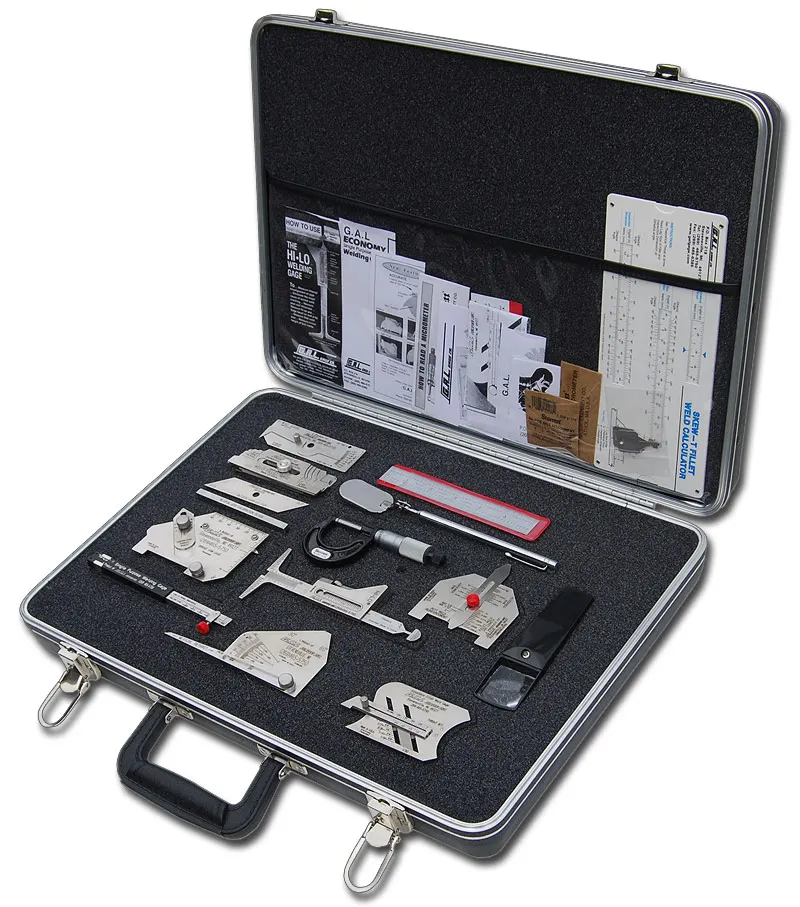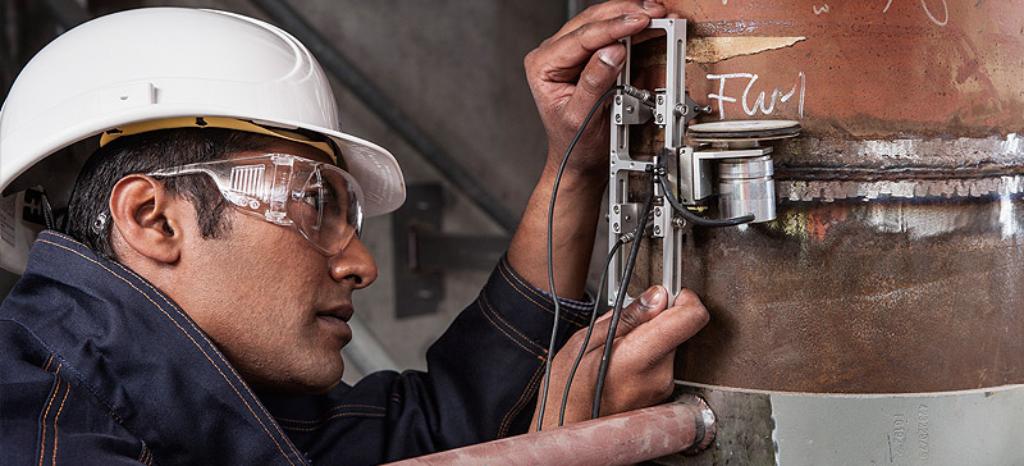A Comprehensive Guide to Welding Examination: Comprehending Requirements, Techniques, and Finest Practices for High Quality Assurance

Welding evaluation plays a pivotal duty in guaranteeing the structural honesty and safety of bonded elements, necessitating an extensive understanding of sector standards such as those established by AWS and ASME. Numerous inspection strategies, including ultrasonic and aesthetic screening, are used to discover potential issues that might jeopardize quality. Implementing best methods can dramatically boost functional dependability and foster depend on among customers. Welding Inspection Gilbert Arizona. As we check out these essential elements, it comes to be noticeable that the effects of welding assessment extend much beyond compliance, welcoming a closer exam of just how these procedures form industry criteria and techniques.
Relevance of Welding Examination
Welding inspection plays an important role in guaranteeing the honesty and safety and security of bonded structures. It is an essential process that verifies that welds conform to predefined requirements, which is essential in numerous industries, consisting of building, vehicle, and aerospace. By performing comprehensive examinations, potential issues such as fractures, insufficient fusion, and porosity can be identified early, stopping tragic failures that could result in mishaps or costly repair services.
The significance of welding evaluation expands beyond mere conformity with guidelines; it also cultivates trust fund with stakeholders. Customers and regulatory bodies expect assurance that the structures they count on are constructed to withstand operational tensions. Furthermore, effective welding evaluation methods add to long-term longevity and efficiency of the frameworks, eventually bring about lowered upkeep prices.
Furthermore, welding assessment advertises a culture of quality within organizations, encouraging adherence to best techniques and constant improvement. By integrating examination procedures into the welding operations, business can enhance their reputation and develop themselves as leaders in top quality assurance. In conclusion, the value of welding assessment depends on its capacity to guard lives, ensure architectural dependability, and copyright sector standards, making it an indispensable facet of welding procedures.
Key Sector Standards
Ensuring compliance with vital market standards is vital for keeping the high quality and safety and security of welded frameworks. Different companies establish these criteria to promote finest methods in welding and inspection. Amongst the most recognized are the American Welding Society (AWS) and the American Society of Mechanical Designers (ASME), which offer comprehensive standards and specifications for welding processes and inspection standards.
AWS requirements, such as AWS D1.1 for architectural welding, rundown demands for products, layout, and screening to make certain the stability of welds. Similarly, ASME codes, consisting of ASME Section IX, regulate the qualification of welders and welding treatments, ensuring consistent high quality in commercial applications. Globally, the ISO 3834 standard highlights high quality needs for blend welding, providing a framework for companies to show conformity with global finest techniques.
Compliance with these requirements not just enhances the dependability of welded structures yet also alleviates threats connected with structural failures. Adherence to industry standards is typically a requirement for governing approvals and can considerably influence job specs. Eventually, understanding and carrying out these vital criteria are important for efficient welding assessment and quality control.
Examination Techniques Overview
Reliable welding examination relies upon a selection of techniques designed to evaluate the quality and honesty of welds. These strategies can be generally classified right into non-destructive and destructive testing (NDT) methods. Non-destructive testing techniques, which are commonly chosen in the industry, permit the evaluation of welds without compromising the honesty of the material.
Among the most typically used NDT strategies are aesthetic evaluation, ultrasonic testing, radiographic testing, and magnetic fragment screening. Aesthetic evaluation is commonly the primary step in the examination process, making it possible for assessors to determine surface imperfections and analyze weld grain profiles. Ultrasonic screening Learn More uses high-frequency sound waves to spot internal flaws and determine the thickness of welds. Radiographic screening includes the use of X-ray or gamma-ray imaging to disclose internal issues, while magnetic bit testing works for spotting surface and near-surface stoppages in ferromagnetic products.
Each method has its very own benefits pop over to this site and limitations, making it important for examiners to select the most proper technique based upon the particular demands of the task, the products involved, and the urgency of the welds being inspected. This mindful choice supports and makes sure thorough analyses security and quality criteria in welding procedures.

Common Issues and Their Effects
A thorough understanding of typical flaws in welds is crucial for keeping structural stability and safety and security in bonded building and constructions. Welding defects can considerably jeopardize the mechanical residential or commercial properties of the joint, causing failures that can endanger both employees and equipment.
Common flaws include porosity, which materializes as tiny gas pockets caught in the weld metal, damaging the overall structure. Breaking is one more prevalent issue, typically resulting from rapid air conditioning or improper joint layout, resulting in stress and anxiety concentrations that can cause tragic failures. Insufficient blend takes place when the weld metal fails to effectively bond with the base material, producing powerlessness that might result in splitting up under tons.
Various other notable issues consist of damaging, where the weld grain erodes the base steel, and slag additions, which can hinder the weld's toughness. Each of these defects has details effects; for example, porosity can minimize ductility, while cracking directly influences tensile stamina. Determining and understanding these problems during evaluation is vital for applying rehabilitative steps and making certain compliance with market requirements, eventually protecting the architectural integrity of bonded assemblies.
Ideal Practices for Quality Control
Carrying out finest methods for high quality assurance in welding processes is important for attaining optimal outcomes and lessening flaws. One critical technique is the establishment of clear welding procedures that adhere to market criteria and requirements. These procedures should consist of thorough guidelines relating useful site to product selection, joint prep work, and welding techniques to make certain consistency and high quality.
Regular training and certification of welding employees are likewise important. Proficient welders who recognize the relevance of quality control are a lot more likely to produce sound welds. Furthermore, implementing a durable evaluation program, including both non-destructive and visual screening (NDT), can help determine issues early in the process, permitting timely rehabilitative actions.
Documentation plays a crucial role in top quality guarantee. Maintaining exact records of welding repair work, criteria, and assessments makes certain traceability and accountability. In addition, employing advanced technologies such as automated welding machines can boost precision and lower the potential for human mistake - Welding Inspection Gilbert Arizona.
Lastly, cultivating a society of top quality within the company urges workers to focus on high quality in their job. By adhering to these finest methods, organizations can boost the honesty of their welding procedures, eventually resulting in improved item top quality and decreased costs linked with rework and fixings.

Final Thought
In conclusion, welding assessment plays a crucial function in making sure the integrity and safety and security of welded frameworks. By carrying out best methods, companies can improve reliability, decrease maintenance prices, and cultivate count on among clients, ultimately adding to effective welding operations.
Additionally, welding inspection advertises a society of high quality within organizations, encouraging adherence to ideal techniques and constant improvement. In conclusion, the value of welding examination exists in its ability to safeguard lives, make certain architectural reliability, and copyright sector requirements, making it a vital element of welding operations.
Amongst the most recognized are the American Welding Culture (AWS) and the American Society of Mechanical Engineers (ASME), which give comprehensive standards and specs for welding procedures and assessment standards.
Eventually, understanding and implementing these crucial standards are crucial for reliable welding evaluation and quality guarantee.
Efficient welding examination depends on a variety of methods developed to assess the high quality and integrity of welds. - Welding Inspection Gilbert Arizona